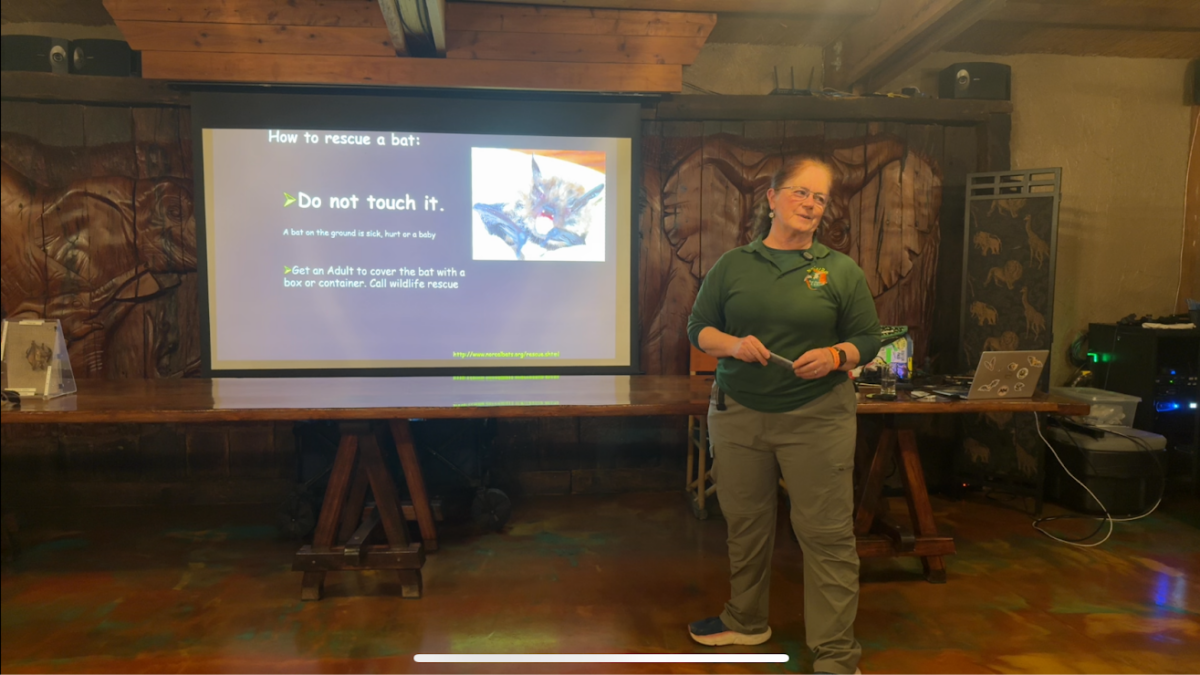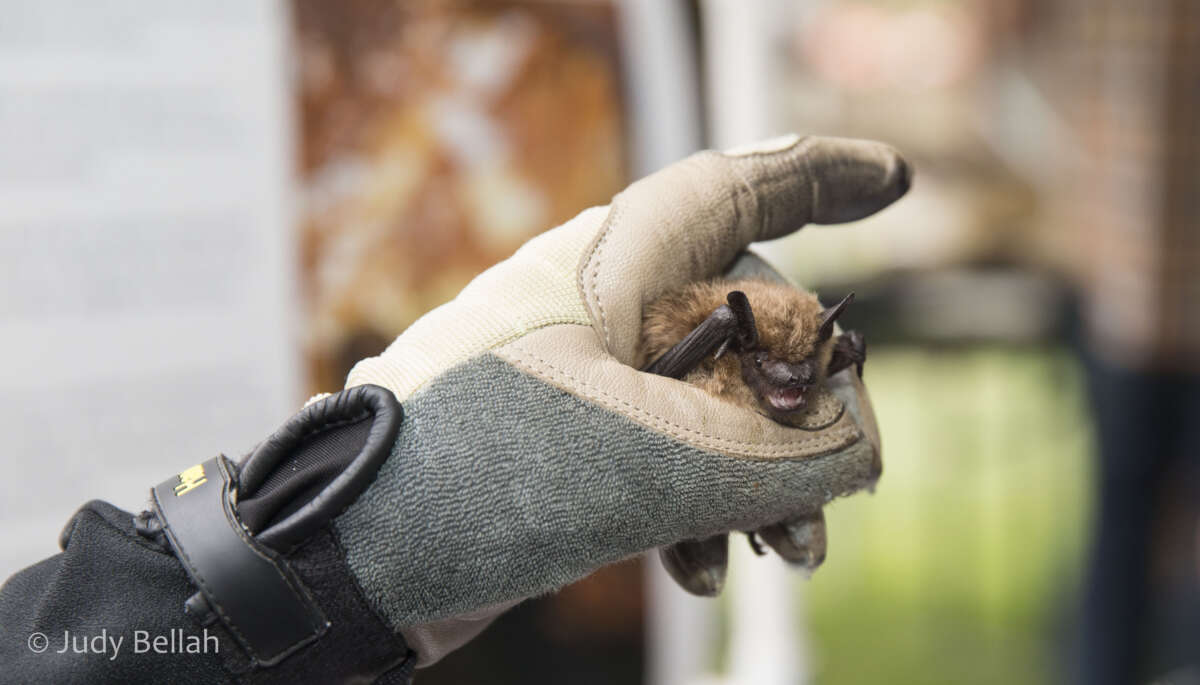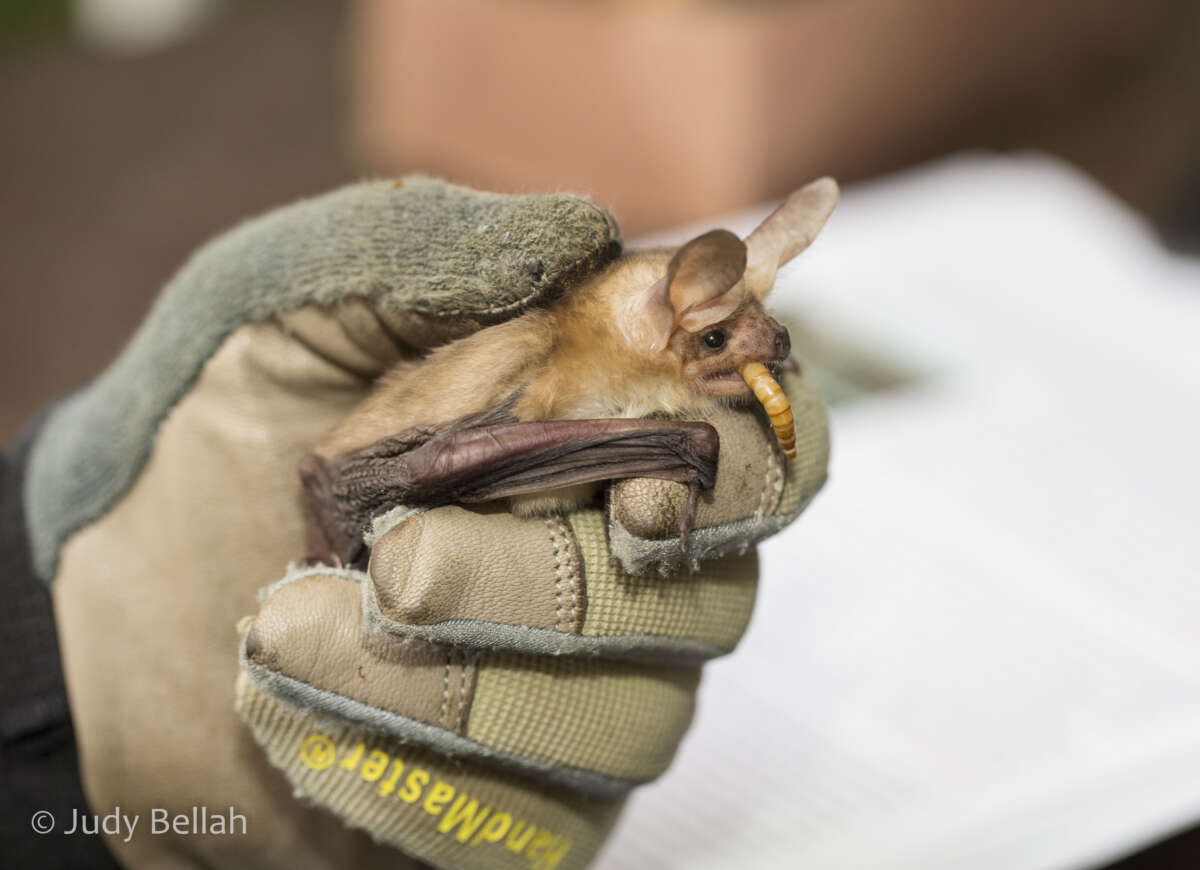Discovering the Wonders of Bats at the Safari West Conservation Speaker Series
Posted in: Conservation, Goings on
I invite you to join me at Safari West on Friday or Saturday evenings for a fun and inspiring half-hour conservation presentation and a conversation with one of our speakers. The talks take place at 8 pm in our Elephant Room following the 7 pm Safari West dinner service. The calendar for the Conservation Series can be found below.
Our Conservation Speakers Series was kicked off on March 1st by Corky Quirk who hails from the Northern California Bats. She has spent the past 25 years dedicated to rescuing, caring for and rehabilitating injured and orphaned bats.

Corky from Northern California Bats
Corky’s enthusiasm about her flying mammal work is contagious. She told us why people are terrified of bats. They are creatures of the night and emerge only after dark to forage and hunt in the hours of darkness using echolocation (high pitched sounds causing echoes) that allows them to hear what is out there to eat. Even though bats are thought of as mysterious and dangerous, they are afraid of us.
Through years of helping the public deal with bats, Corky has learned to let youngsters know that when they find bats, they must find an adult to help. Adults should call their local wildlife rescue to pick up the bat. If bats are in immediate danger of oncoming traffic or attack by household cats, Corky cautioned that it is critical to use protection such as leather gloves. Never pick up a bat with your bare hands.
Because they fly, we forget that bats are mammals like us. They are warm blooded, and they are the only mammal capable of sustained flight. They soar, but unlike birds, they use their hands. This part of their skeletal structure looks just like ours with an arm, elbow, wrist, thumb and four fingers.

The webbing between the digits of the “hand” allows them to soar. And it is the soaring and erratic twists and turns in the night that terrifies observers. But that’s how they catch their prey and in doing so, they are nature’s pest control. Living worldwide, except Antarctica, they help control insect populations that can decimate agricultural crops. More bats mean less pesticides and a healthier world for all of us. Sadly, it is the pesticides and habitat destruction that wreak havoc on bat populations worldwide. White-nosed syndrome, caused by fungus, also decimates bat populations.
The highlight of the night for all of us was meeting three wild bats that Corky cares for year-round. They are permanently injured and cannot be released back into the wild. Here are some notes from Corky as she introduced her charges.
Meet and Greet a Mexican Free-Tailed Bat

Photo: Merlin D. Tuttle
First she brought out a Mexican free-tailed bat. They live in the warmer areas of California, such as the Central Valley where they’re often found roosting caves, but they are also attracted to cities and towns where they can be found roosting under bridges and roofs. The Mexican free-tailed bats are extremely aerodynamic. While Corky was showing us this bat, we could see its “free tail” (hence the name). The tail isn’t attached to the membrane like the tails of other bats.
This minimizes drag while in flight as does their short fur, sleek ears, and long, narrow wings. The Mexican free-tailed bat is the fastest mammal in the world. Faster than a cheetah when pursuing prey, they have been clocked at 99- 100 mph. Because they forage for insects up to ½ mile off ground, they are not hindered by obstacles like trees. When it comes to diet, the Mexican Free-Tailed Bat feeds on moths and mosquitoes, which makes it a natural pest controller. Moths and mosquitoes are agricultural pests and mosquitoes spread diseases.

Mexican Free-tailed Bat Tail
Mexican free-tailed bats have “toes whiskers”. The toe whiskers help it maneuver in the crevices and cracks of caves or human-made structures where these bats often roost.
We saw a Big Brown Bat Up Close and Personal

Big Brown Bat by Judy Bellah
The big brown bat is one of the larger bats in North America. It is found from Canada to Mexico. Not as fast as the Mexican free-tailed bat, it flies through the night, foraging for insects, at speeds up to 40 mph. We noticed that it had much heavier fur than the Mexican free-tailed bat. Corky gently extended the wing of the big brown bat. It had noticeably wider wings top to bottom than the Mexican free-tailed bat. The wider wings allow the big brown bat to fly in and amongst tree branches to get food not accessible to the high flying Mexican free-tailed bat. The big brown bat’s favorite food is a beetle which is an agricultural pest, especially in the Central Valley of California where farmers are plagued by beetles destroying crops of watermelons, cucumbers and pumpkins. Since the bats that Corky showed all have permanent injuries and cannot be released back into the wild, Corky feeds them food that is good for her bats, but easier to come by. She feeds the big brown bat, meal worms that she can pick up at the pet store. In the wild, big brown bats can eat half their weight or more, consuming large quantities of destructive beetles.
The Pallid Bat is the California State Bat

Pallid Bat by Judy Bellah
The first thing we noticed about the pallid bat was the color of its fur. Reminiscent of our California hills all summer, it was truly a golden coat of hair. Corky told us that this species is found throughout our state. It is a relatively large bat with bigger ears than the other bats we saw. The pallid bat forages for big invertebrates on the ground. It finds them flying low to the ground and it can hear the insects moving with their large ears. It forages on Jerusalem crickets, centipedes, big beetles and even scorpions. Corky showed us the pallid bat’s wing.
It was quite wide. This allows the pallid bat to catch a large insect and jump off the ground and carry the bug to a safer spot to consume its meal. And a safer spot might be an entryway to a house. Corky regularly gets calls about bats living over a homeowner’s front door and leaving a pile of insect parts below.
In Conclusion, A Creature of the Night Worth Preserving
Corky’s hope is that by learning more about bats, people will have an understanding and appreciation of the roles these bats play in our ecosystems. She wants us all to be advocates for their conservation.
By understanding and appreciating the unique adaptations and ecological roles of bats we can better advocate for their conservation and ensure these fascinating creatures continue to thrive in our ecosystems.
We hope this peek into the world of bats has piqued your interest, and we look forward to seeing you at one of our upcoming talks in the Conservation Speaker Series at Safari West.
This blog post is designed to engage and inform readers about the upcoming speaker series at Safari West, highlighting the importance of bats in our ecosystem while preserving the enthusiastic and educational tone characteristic of our presentations.


